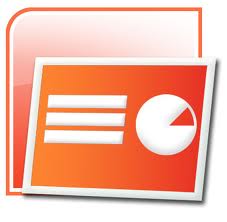Nuclear Energy
The use of nuclear energy for electricity is a technology that began with a tremendous amount of optimism before badly falling out of favor in the late 1970s and early 1980s. Since then, people are reluctant to embrace it as an alternative to fossil fuels, in spite of recognizing the damage done by using coal, oil and natural gas.
Nuclear Energy Lecture Powerpoint
 |
Purpose: At its essence, the design of a nuclear reactor mirrors that of a fossil fuel power plant. Water is heated, converted to steam, and the force of that steam spins a giant turbine. However, instead of burning a carbon-based fuel, a chain reaction splitting the nucleus of uranium atoms is taking place. Uranium is much more energy-dense than fossil fuels and the fission reaction produces very little air pollution. However, nuclear accidents are among the most damaging singular events that have ever occured. This Powerpoint presentation will cover each of these topics, using Castle Bravo, Three Mile Island, and Chernobyl as case studies for the risks of this technology.
Essential Concepts: Nuclear energy, uranium, U235, nuclear fission, nuclear reactor, nuclear waste, control rods, fuel rods, moderator, nuclear meltdown, Three Mile Island, Chernobyl, Castle Bravo, nuclear fallout, radiation sickness.
Nuclear Energy Student Notes Outline
Purpose: Taking efficient notes can be a big challenge for many students, especially when working from a Powerpoint lecture. This outline gives students a means to take notes that guides them toward important concepts and avoids the pitfalls of writing word-for-word or simply not taking notes at all. The outline is written as a series of questions, fill-in-the-blanks, or diagrams. This outline is based on the Powerpoint lecture written specifically for this unit.
Essential Concepts: Nonrenewable energy, fossil fuels, coal, natural gas, petroleum, oil, coal mining, strip mining, oil drilling, electricity generation,power plants, generator, turbine, hydraulic fracturing.
Radio Bikini Worksheet
Purpose: This is a worksheet to accompany the Radio Bikini 1988 Academy Award-winning documentary. Actual footage from Operation Crossroads in the Bikini Atoll is shown, documenting the blasts and aftereffects of the Shot Able and Shot Baker nuclear blasts.
Essential Concepts: Operation Crossroads, nuclear testing, Bikini Atoll, nuclear fallout.
Nuclear Reactor Diagram Worksheet
Purpose: This worksheet has students label each of the major components of a pressurized water nuclear reactor. They will also color code the different water loops to show the areas of steam and liquid water.
Essential Concepts: Nuclear reactor, fuel rods, control rods, cooling tower.
The Eyes of Nye - Nuclear Energy
Purpose: This episode of The Eyes of Nye spends some time covering the basics of the nuclear fission chain reaction, but the majority of the episode actually focuses on nuclear waste. Bill Nye shows the on-site disposal and storage systems currently used for nuclear waste and also interviews an engineer working on the Yucca Mountain nuclear storage tunnels.
Essential Concepts: Nuclear energy, nuclear meltdowns, nuclear fission, nuclear reactors, nuclear waste, nuclear half-life.
PBS Nature - Radioactive Wolves Worksheet
Purpose: Radioactive wolves is a documentary produced by PBS Nature that explores the rebirth of the ecosystem in the exclusion zone surrounding the Chernobyl nuclear reactor. Since humans have abandoned the area, many other species have thrived, including top predators like wolves. This documentary is a good way to alleviate some of the misconceptions people have about radioactive fallout, as the animal and plant populations overall are quite healthy.
Essential Concepts: Chernobyl, nuclear fallout, ecosystem regeneration, food web, biomagnification.
Nuclear Reactor Diagram Worksheet
Purpose: This worksheet has students label each of the major components of a pressurized water nuclear reactor. They will also color code the different water loops to show the areas of steam and liquid water.
Essential Concepts: Nuclear reactor, fuel rods, control rods, cooling tower.
Nuclear Waste Half-Life Lab
Purpose: One of the biggest challenges facing nuclear energy is the problem of how to deal with the waste. Spent fuel has been accumulating in dry cask storage at the world's nuclear facilities for decades, and no long-term disposal plan has established by the scientific community. In this lab, students will use colored water to simulate the decay of Strontium-90, while doing some calculations to see how long it takes the radioactive isotope to become harmless.
Essential Concepts: Nuclear waste, radioactive half-life.
Nuclear Energy Study Guide
Purpose: Once the instruction for the unit is completed, students can complete this study guide to aid in their preparation for a written test. The study guide is divided into two sections: vocabulary and short answer questions. The vocabulary is taken directly form the lecture, sequentially. The short answer questions are meant to model the type they may see on the exam. This study guide is sequentually based on the Powerpoint lecture from this unit.
Essential Concepts: Nuclear energy, uranium, U235, nuclear fission, nuclear reactor, nuclear waste, control rods, fuel rods, moderator, nuclear meltdown, Three Mile Island, Chernobyl, Castle Bravo, nuclear fallout, radiation sickness.
